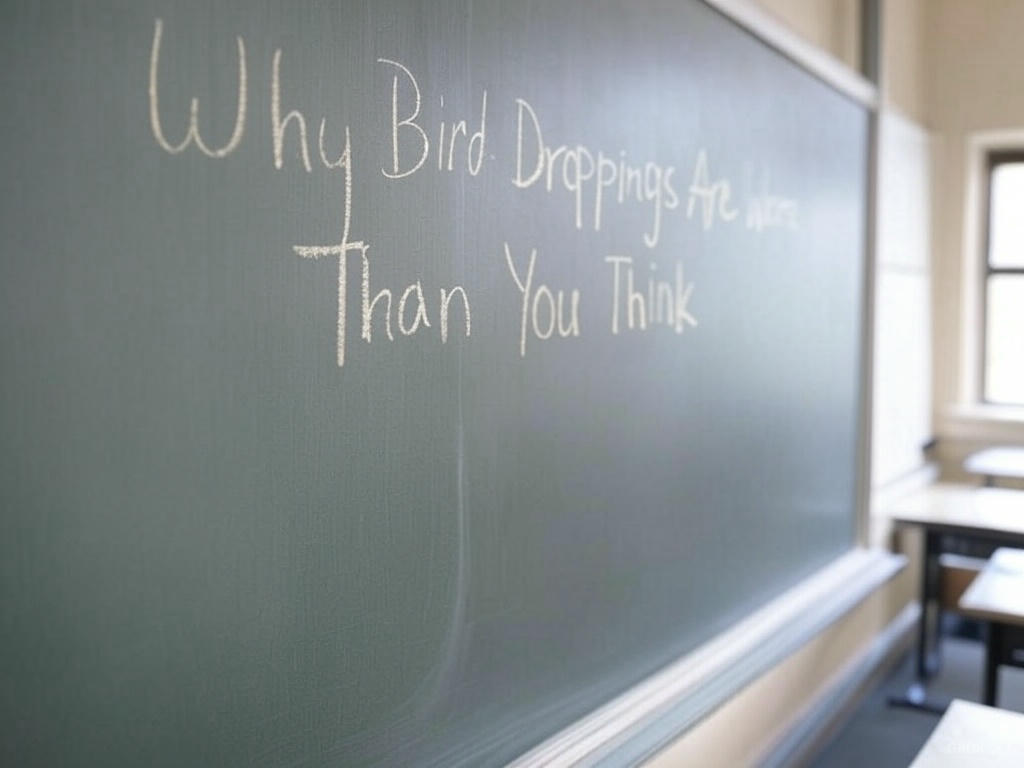Bird droppings on your home might seem like nothing more than an eyesore, but they’re actually a serious problem. From corroding your roof to creating health hazards, these seemingly harmless splatters can lead to costly damage if left unchecked. In the UK, pest birds like pigeons and seagulls are notorious for leaving their mark on homes, especially in urban and coastal areas. But why are bird droppings so harmful, and what can you do about them? Let’s break it down.
The Chemical Makeup of Bird Droppings – Why They’re So Harmful
Bird droppings aren’t just dirt—they’re acidic. They contain uric acid, which has a pH level between 3 and 4.5, making it highly corrosive. To put that into perspective, it’s strong enough to eat away at stone, metal, and even paint over time. Unlike other animal waste, bird droppings don’t dissolve easily in rainwater, meaning they can linger on surfaces for long periods, causing gradual deterioration.
If you’ve ever seen buildings with dark streaks running down their walls or patches of missing paint, there’s a good chance bird droppings played a part. And that’s just the beginning.
Structural Damage to Your Home
If left unchecked, bird droppings can cause serious damage to multiple areas of your home:
1. Roofing Problems
Bird droppings can corrode roof tiles and metal fixtures, weakening your home’s first line of defence against the elements. Over time, this can lead to leaks and costly repairs. If birds are regularly perching or nesting on your roof, the damage can become extensive. You can check out the bird control solutions available at apexbirdcontrol.uk to combat this.
2. Brick and Stone Erosion
Many UK homes are built with brick or stone, but these materials aren’t immune to the effects of bird droppings. The acid can break down the outer layers, leading to cracks and structural weaknesses, especially in older buildings.
3. Wood Decay
If you have wooden decking, fencing, or window frames, bird droppings can speed up rot by trapping moisture and encouraging fungal growth. This can make your outdoor structures weaker and more prone to damage.
4. Clogged Gutters & Drainage Issues
Bird droppings, combined with nesting materials, can block gutters and downpipes, preventing proper drainage. This increases the risk of water damage, damp, and mould inside your home.
Why DIY Installation Is Not Recommended for Bird Control Solutions
Not as Effective
First, you have to think about the experience you have compared to an expert. This is probably your first time attempting a project like this, which means that plenty can go wrong. The mistake that most homeowners make is that they choose the wrong method for bird control. There are different techniques you can use, and you must select the best one to prevent nesting birds. You could discover too late that your efforts haven’t been good enough. In fact, some homeowners discover that birds are still accessing their building and they can’t understand how this is happening.
Cheaper Materials
One of the main reasons homeowners try to install bird control solutions themselves is to save money. Unfortunately, this can be a trap. In particular, it can mean that you buy cheaper materials in the process, which aren’t going to do the best job. First, they might break easily, which allows birds through. Plus, they aren’t going to last as long as the materials the professionals use. Thus, you could end up spending more than you realise later down the line. The experts know what materials work and how you can get your money’s worth.
Can be Dangerous
Most birds hang out in high places on buildings. This means that you have to go up there with ladders and work with tools and materials. This is a dangerous task and one that most people aren’t used to. It can be very dangerous to attempt DIY installation, and the consequences can be severe. This is something that’s best left to those with experience.
Conclusion
Bird droppings aren’t just unsightly—they’re destructive, unhygienic, and expensive to deal with if left unchecked. From corroding your roof and eroding bricks to posing health risks and attracting pests, the damage they cause is worse than most homeowners realise.
Taking preventive steps now—like installing deterrents, keeping surfaces clean, and blocking nesting areas—can save you time, money, and hassle in the long run. Don’t wait until you’re facing costly repairs—act now to protect your home from the hidden dangers of pest birds.





